In this blog, we examine the case of a sample company ACME Infrastructure. ACME Infrastructure is inaccessible for at least one day because of a technical problem. Over the decade, cloud platforms have encountered all sorts of problems—from business strategy to security, time to deploy, implementation to operations—that have delayed companies in adapting to new business needs, security, and scale using existing cloud platforms.
What if you can get over the technical challenges quickly and easily?
Oracle Cloud Infrastructure (OCI) Cloud Adoption Framework (CAF) can empower your organization to improve business agility and promote innovative solutions. The OCI CAF provides best practices and a structured approach to help your organization successfully adopt the cloud in many use cases, including the following examples:
- Multicloud: Adding OCI to your existing cloud vendor
- Moving from on-premises to OCI
- Developing directly in OCI
Getting started with the CAF
The CAF divides the cloud adoption process into six conceptual pillars, with key capabilities in each pillar. The pillars help you connect business strategy to technology solutions, while aligning people, processes, and technology.
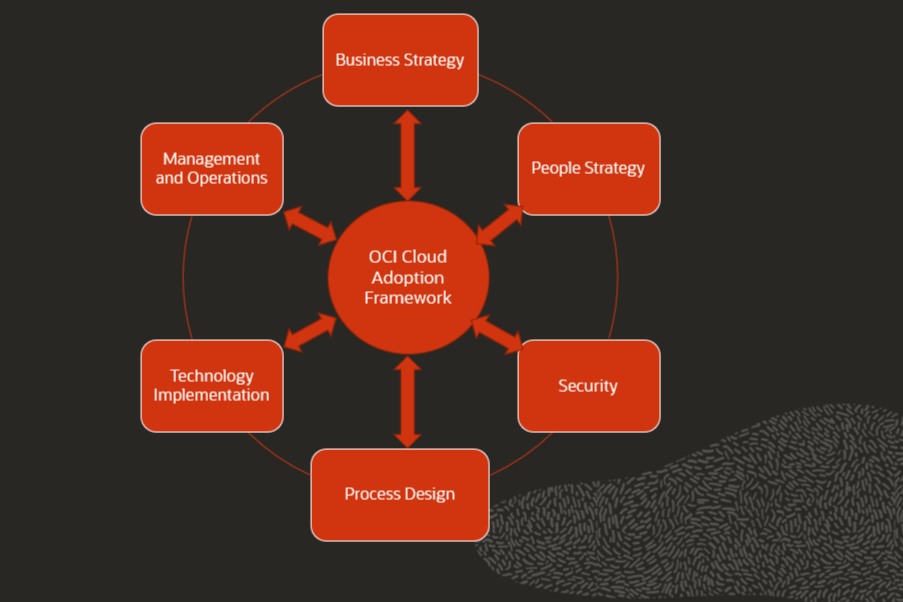
The framework is a resource for any customer who wants to better understand the cloud adoption process. It provides a methodology and resources to facilitate the transition to the cloud. The framework also includes the tools needed to understand OCI’s differentiators and built-in efficiencies, such as Cloud Lift services, and key value programs, including the recently launched Oracle Support Rewards.
Within six pillars, the technology implementation pillar focuses technically deploy a landing zone for your organization. The landing zone serves as the foundation for your cloud deployment. Let’s focus next on deploying a landing zone.
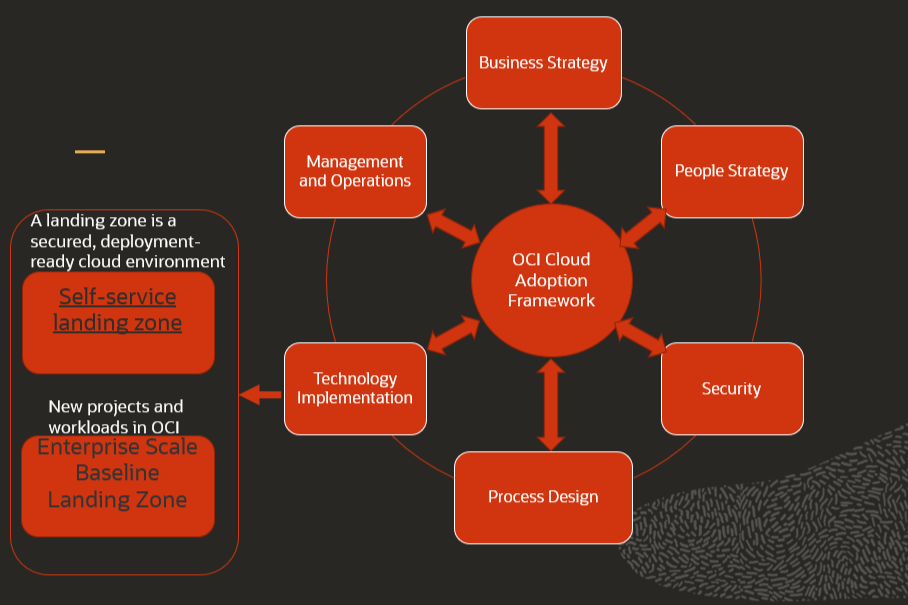
Deploy an enterprise-scale baseline landing zone
In this part, we will focus on helping with a sample use case, using ACME example that is running in OCI and requires a quick and secure deployment /migration of their enterprise-grade finance and HR applications using OCI CAF enterprise-scale baseline landing zone.
Collect prerequisites and information required to deploy a foundation.
| Group |
Parent |
Child |
Value |
| Tagging | Tag cost center |
|
ACME_COST |
|
|
Tag geo location |
|
ACME_GEO |
| Compartment |
Parent compartment name |
|
ACME_PARENT |
|
|
|
One or more workload compartments under the parent compartment. |
FINAPPS, HRAPPS |
| IAM |
Email addresses for one or more break-glass users |
|
acme@acme.com |
| VCN |
VCN CIDR block |
|
10.0.0.0/24 |
|
|
VCN DNS label |
|
ACMEDNS |
|
|
|
Private subnet CIDR blocks |
10.0.0.64/26, 10.0.0.128/26 |
|
|
|
Private subnet DNS labels |
FINAPPSDNS, HRAPPSDNS |
|
|
|
Database subnet CIDR blocks |
10.0.0.192/27, 10.0.0.224/28 |
|
|
|
Database subnet DNS labels |
FINDBDNS, HRDBDNS |
|
|
|
Provision public subne? |
Not planned |
|
|
|
Provision a shared services subnet? |
Yes |
|
|
|
Shared service subnet CIDR block |
10.0.0.240/28 |
|
|
|
Shared service subnet DNS label |
SHAREDDNS |
| Budget |
|
Budget smount |
100 |
|
|
|
Budget alert rule threshold |
40 |
|
|
|
Budget alert rule recipients |
acme@acme.com |
|
|
|
Budget alert rule message |
Default budget alert |
| Security
|
|
Enable advanced logging? |
BOTH |
|
|
|
Audit log retention rule duration time amount |
10 |
|
|
|
Enable Cloud Guard? |
Yes |
|
|
|
Host scan recipe agent settings scan level |
|
|
|
|
Host scan recipe agent settings scan level |
STANDARD |
|
|
|
Host scan recipe port settings scan level |
STANDARD |
|
|
|
Agent cis benchmark settings scan level |
STRICT |
|
|
|
VSS scan schedule |
WEEKLY |
| Bastion |
|
Bastion client CIDR block |
10.0.0.0/26 |
|
|
|
Allow llst |
10.0.0.64/26, 10.0.0.128/26, 10.0.0.192/27,10.0.0.224/28, 10.0.0.240/28 |
Download the code from GitHub.
Resource Manager is an OCI service that allows you to automate the process of provisioning your OCI resources.
Using Oracle Resource Manager, go to Deploy.

Log in to OCI.



Choose your region, enter the stack information, and click Next.
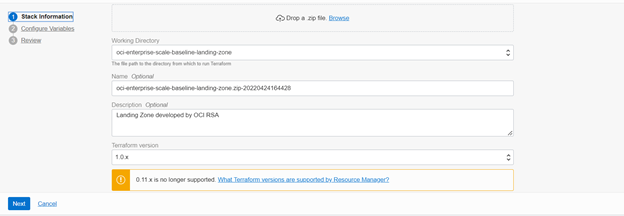
Enter the variable details that you collected.



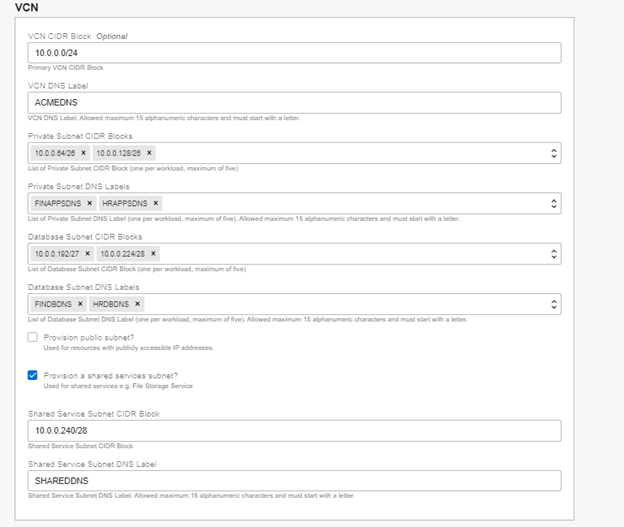
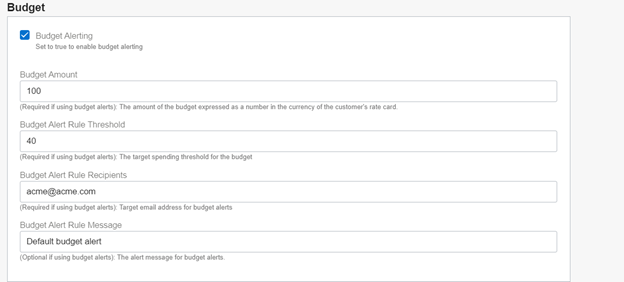

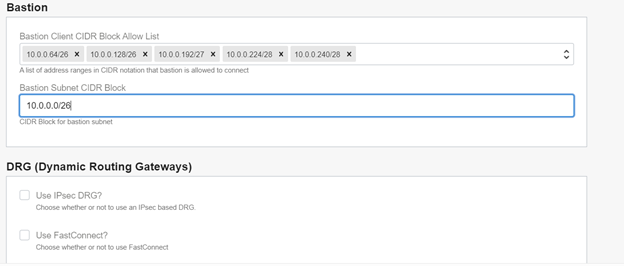

Review all the variables, disable the Run Apply check box, and click Create.
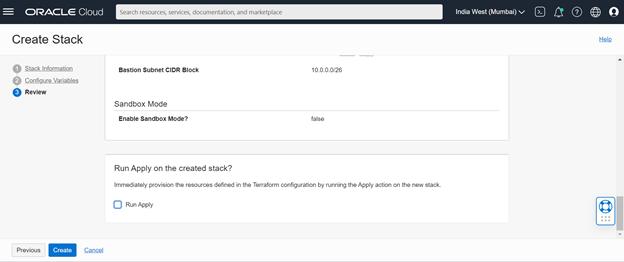

Run the plan to validate the stack. Its status changes from Accepted to Succeeded.
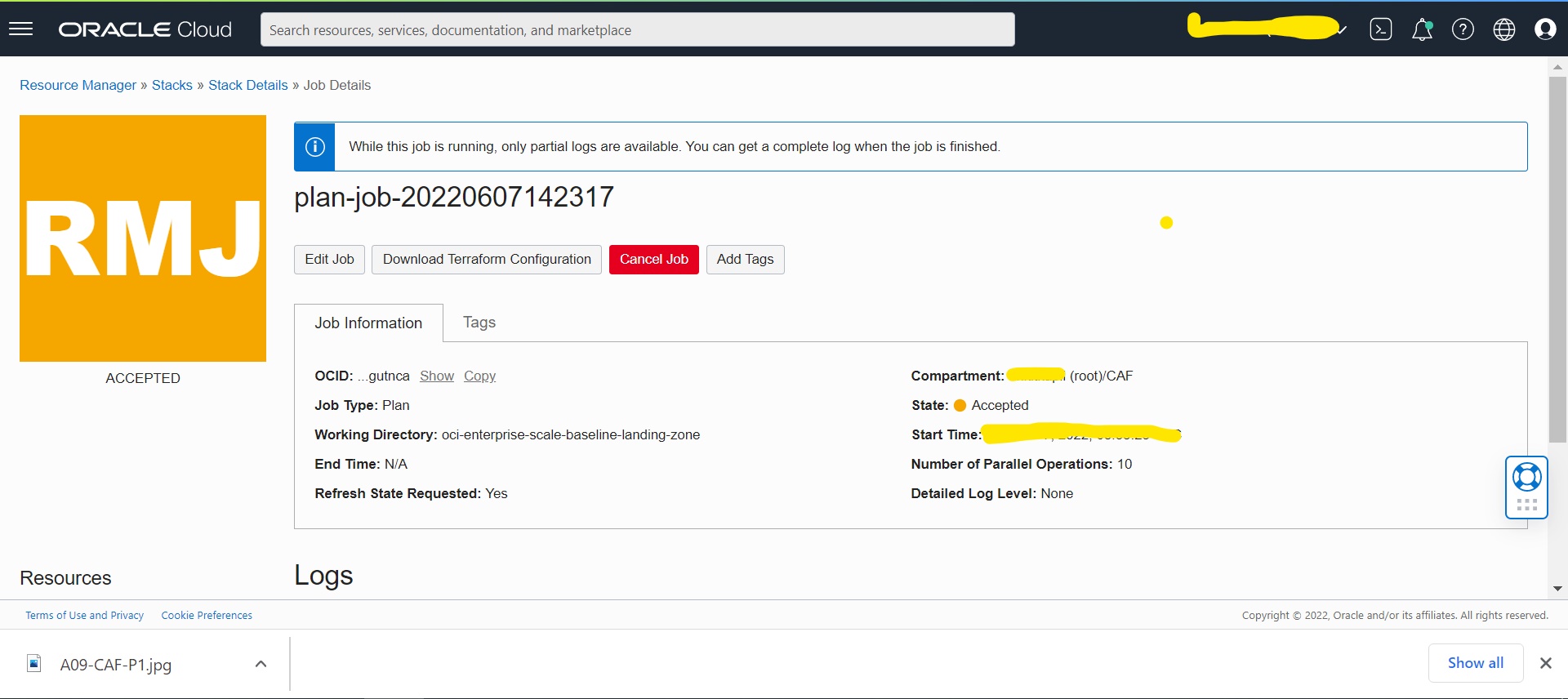

When you’re ready, apply the stack to deploy the enterprise-scale baseline landing zone. ACME Infrastructure’s OCI environment is ready to deploy the finance and HR applications on OCI.
Conclusion
the OCI CAF landing zone provided the baseline architectural framework to ACME Infrastructure company to deploy new finance and HR applications on OCI with the following primary objectives:
- Reduce time-to-start and deploy
- Provide an architecturally strong foundation
- Maintain the flexibility to customize and evolve the implementation to ACME’s organizational needs
For more information about the new six strategic areas, review the updates in the OCI Cloud Adoption Framework website and see the technical site. Also, review Oracle Cloud Lift services.
We look forward to supporting you in your digital transformation journey.
